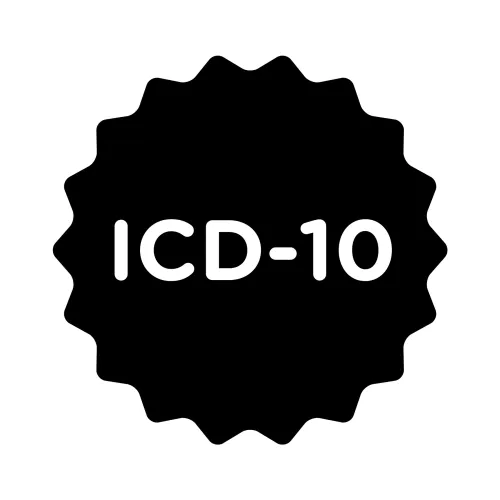Properly Account for Bundling, Laterality, Modifiers in This Surgical Example

When in doubt, report modifier 59 over X{EPSU}. If you’re working on a detailed surgical report, you know there’s more involved behind the scenes than the mere reporting of CPT® codes. While the determination of the correct code(s) is important, you’ve got to consider a plethora of additional factors such as bundling edits, coding guidelines, and modifiers. That’s why today, you’ll be tasked with working through a surgical report that will force you to channel everything you’ve learned as a coder to get to the correct answer. Take a step-by-step approach to this clinical case so the next time a similar operative report hits your desk, you’ll be ready. Start by Defining Terms, Distinguishing Between Procedures Example: The surgeon performs a total right thyroid lobectomy with intraoperative nerve monitoring and bilateral central neck exploration for parathyroid adenoma. The diagnoses are right thyroid follicular neoplasm and right parathyroid adenoma. First, you want to address what you should and should not be billing out for. You will not bill separately for the nerve monitoring. This service is performed intraoperatively by a separate physician from the operating surgeon. You will be reporting a code for the total right-sided thyroid lobectomy and a separate code for the exploration of the parathyroid glands. For the lobectomy, you will report code 60220 (Total thyroid lobectomy, unilateral; with or without isthmusectomy). Additionally, you will append modifier RT (Right Side) to 60220. Coder’s note: There is some confusion among the coding community on if and when coders should report codes with a bilateral surgery indicator of “0” with an RT or LT (Left Side) modifier. The answer depends on if the code description is inherently unilateral or inherently bilateral. For inherently bilateral procedures, there’s no need to append RT and LT or modifier 50 (Bilateral Procedure) because the code description already states as much. However, for codes that are inherently unilateral, such as 60220, you should report the service with its respective modifier indicating laterality. When you read guidelines instructing you not to report modifiers LT, RT, or 50 for codes with a bilateral surgery indicator of “0,” what those guidelines really mean is not to report both modifiers LT and RT, not one or the other. It’s a semantical error that will hopefully be cleared up in the near future. Sarah L. Goodman, MBA, CHCAF, COC, CCP, FCS, president and CEO of SLG, Inc. Consulting in Raleigh, North Carolina, adds: “The bilateral adjustment isn’t appropriate for codes in this category because of physiology or anatomy, or because the code description clearly states that it is a unilateral procedure and there is an existing code for the bilateral procedure.” Consider More Bilateral Surgery Indicators, Bundling Edits Next, you will report code 60500 (Parathyroidectomy or exploration of parathyroid(s)) for the parathyroid exploration portion of the procedure. You can see that 60500 also has a bilateral surgery indicator of “0.” However, in this case, the code description includes both unilateral and bilateral exploration as identified by the use of the word parathyroid(s). In these scenarios, you may append an LT or RT modifier in the appropriate instances. However, in this case, you should not append any modifier since a bilateral exploration was performed. Keep in mind that reimbursement will not be affected one way or the other. Finally, after performing a National Correct Coding Initiative (NCCI, or CCI) edits check between 60220 and 60500, you will come up with a modifier indicator of “1” — with 60220 being the column 2 code. Without any authoritative guidance to fall back on, this scenario might be tricky in determining whether you should bundle 60200 into 60500. However, consider this useful bit of information offered in CPT® Assistant (December 2012; Volume 22: Issue 12): While a full operative report would offer a definitive answer, you can deduce based on the entirely separate diagnoses involved with each procedure that both services may be billed out. Since 60220 is the column 2 code, you will append modifier 59 (Distinct Procedural Service) to 60220. Your final coding breakdown will be as follows: When in Doubt, Stick With Modifier 59 Consider: For Medicare Part B patients, you may consider reporting a modifier X{EPSU}; however, choosing between modifier XS (Separate structure) and XU (Unusual non-overlapping service) may be tricky in this particular instance. Technically, both options are accurate. XU would indicate to Medicare that the services did not overlap with one another despite neighboring anatomical areas. Similarly, XS accurately indicates that the services provided were performed on two distinct structures or organs. However, in choosing the correct option, you’ve got to consider what authoritative information is available on the subject. If none were available, you would be fine submitting 60220 with either XS or XU. However, the guidelines outlined in the CPT® Assistant article state that it’s appropriate to bill out 60220 with 60500 as long as each service is performed for entirely separate diagnostic reasoning. That justification seems to favor the use of modifier XU over XS, simply because the justification does not hinge on the fact that the parathyroid and thyroid glands are two unique structures from one another. To avoid adding any additional confusion to an already-tricky subject, you might want to consider submitting 60220 with modifier 59 for all payers, including Medicare. While Medicare offers the X{EPSU} modifiers to add further specificity to your claims, they are not required.




